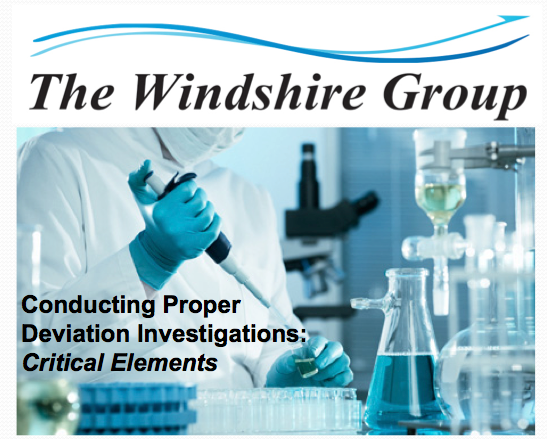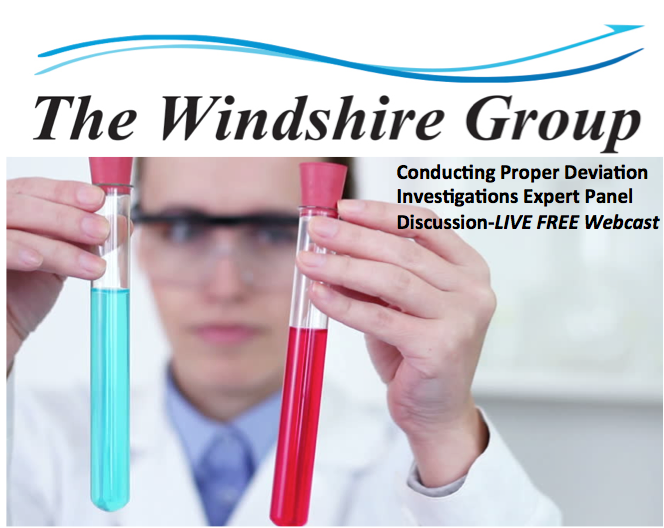The news of the Novo Nordisk (Novo Holdings) intent to acquire Catalent has taken the…

Conducting Proper Deviation Investigations: Critical Elements
The following is an excerpt taken from The Windshire Group’s webcast “Conducting Proper Deviation Investigations Expert Panel Discussion – Live FREE Webcast”.
Daniel DeLucy: Deviation investigations are a very common topic to be reviewed during FDA investigations. You can scroll over to FDA.gov and on their warning letter page you can pick anyone that they have there for observations and find any type of comments or observations about deviations. Really to have a successful audit, having a solid deviation system and very good, robust write-ups is key. When you have inadequate investigations, as you all know, this could cause some severe issues for the company. I have worked with and consulted with some firms that really fell down in this area and wound up with warning letters, recalls, and consent degrees. What it comes down to is that proper root-cause analysis of the issue. It is one of the most important things you can focus on in a deviation investigation. Really focusing on what went wrong and then developing a very strong Corrective and Preventative Action (CAPA) is really key to making sure that that deviation investigation is resolved and that you will not see that issue happening again.
One of the other things I like to highlight is having a very solid Standard Operating Procedure (SOP) with enough explanation that your end user and your operators understand how deviations are identified and classified. Classification is something that some companies tend to look towards to make their deviation process more robust and more efficient. Maybe classify the deviations in the major, minor, or critical category. It helps quality professionals that are in the quality unit gage how important these deviations are. If they can close them out maybe in a few days or maybe the more critical ones need to be elevated to upper management or potentially some regulators. Then also how long they need to work on investigating the cause. Having that information contained in that standard operating procedure can really help the operator and the end user have that strong deviation write-up. Root-cause analysis again is key. I do one webinar specifically on root cause analysis because it is so important. Many firms actually chose to do workshops on root-cause analysis because that is one of the pinnacles of the deviation investigation system. Making sure your are really getting into down to at least a potential root cause. Really aiming for that probable root cause and then really developing those strong corrective and preventative actions so that issue does not happen again.
A consistent approach to conducting pharmaceutical deviation investigations is a critical component of a fully functioning, effective quality system and FDA inspection target area. This free webcast included a discussion of critical elements needed to achieve consistent results with your deviation investigation program. Real-life examples were included. Key elements of conducting a successful investigation include:
- Methods of conducting an investigation, i.e., root cause analysis, 5 Whys, fishbone.
- Interviews
- Documents
- Corrective action, preventive action
- Product impact assessment
- Expectations from regulatory agencies
 For a free download of the entire webcast recording – click here
For a free download of the entire webcast recording – click here
Dig Deeper – For our in-depth On-Demand Conducting Proper Deviation Investigations One Hour Webcast – click here



This Post Has 0 Comments